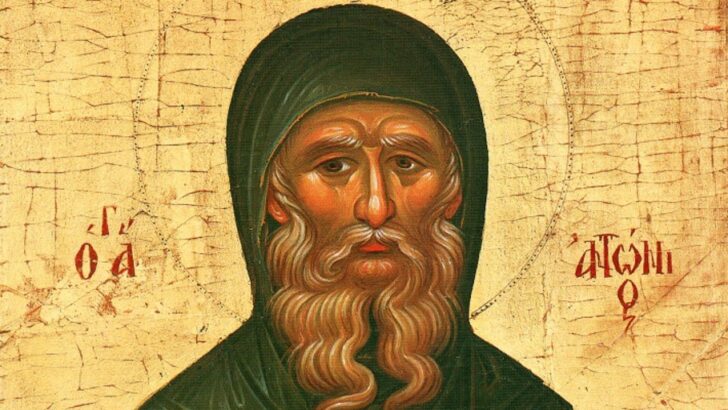St Anthony the Great or St Anthony the Abbot was born in a village on the left bank of the Nile, Egypt, in the 3rd Century AD. At the age of 20, moved by the Scripture verse “Go, sell what you have and give to the poor” (Mark 10:21), renounced everything he had to live as a hermit. We know his life thanks to the biography written by his disciple Athanasius of Alexandria.
St Athanasius described the hermit as a model of Christian virtue, humble, highlighting his self-control, and love for God and for others. Though he belonged to a wealthy family, from an early age he showed no interest in the luxury of worldly life. He preferred work and meditation to parties and banquets. For his importance among the Desert Fathers and to all later Christian monasticism, he is also known as the Father of all Monks.
St Anthony spent many years living in an ancient rock tomb, struggling against the temptations of the devil, who often appeared to him to show what he could have done if he had remained in the world. Sometimes the devil appeared as a ferocious beast, but Anthony responded with fasting and penance of any kind.
St Anthony of Egypt lived until 106 years of age. He is the most famous monk of ancient Christendom, a noble example of austerity and sacrifice. Most of his life was spent in solitude. But, as we find in tradition, saints care for people’s souls and the monk led many people to himself for guidance and spiritual healing. Many people would travel to receive his guidance. “He was able to be of such use to all,” St Athanasius wrote, “that many soldiers and men who had great possessions laid aside the burdens of life and became monks for the rest of their days. And it was as if a physician had been given by God to Egypt.”
During his life as a monk he went to Alexandria to give aid and comfort to the Christians persecuted by Emperor Maximian, and then retired near to the Red Sea , but had to return to Alexandria shortly after to fight the Arian heresy, more and more widespread in the eastern regions of the empire.
St Anthony Abbot is usually represented in art next to a piglet. On his robe there is a tau, the T-shaped Egyptian cross. In the centuries, episodes from the life of St Anthony have inspired many artists.
St Anthony is celebrated on the day of his death, January 17.


 Renata Milán Morales
Renata Milán Morales
